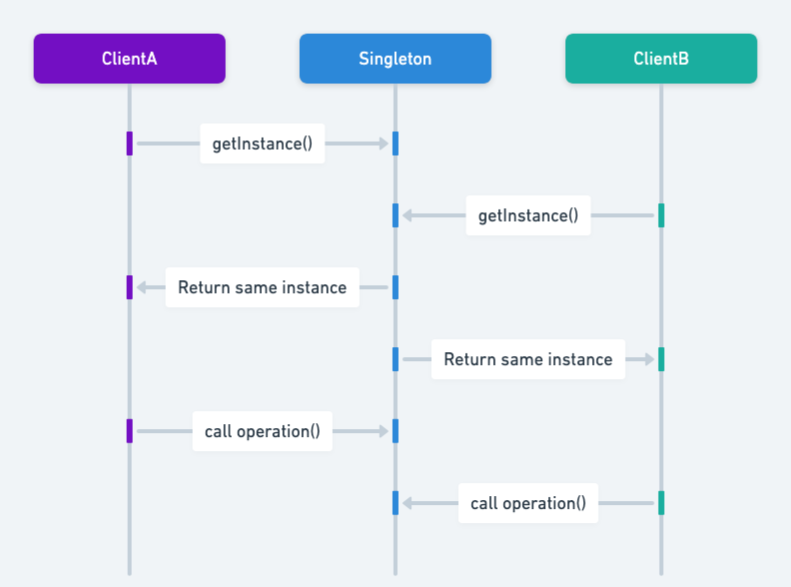Singleton Pattern in Java: Implementing Global Access Points in Java Applications
Also known as
- Single Instance
Intent of Singleton Design Pattern
Ensure a Java class only has one instance, and provide a global point of access to this singleton instance.
Detailed Explanation of Singleton Pattern with Real-World Examples
Real-world example
A real-world analogy for the Singleton pattern is a government issuing a passport. In a country, each citizen can only be issued one valid passport at a time. The passport office ensures that no duplicate passports are issued to the same person. Whenever a citizen needs to travel, they must use this single passport, which serves as the unique, globally recognized identifier for their travel credentials. This controlled access and unique instance management mirrors how the Singleton pattern ensures efficient object management in Java applications.
In plain words
Ensures that only one object of a particular class is ever created.
Wikipedia says
In software engineering, the singleton pattern is a software design pattern that restricts the instantiation of a class to one object. This is useful when exactly one object is needed to coordinate actions across the system.
Sequence diagram

Programmatic Example of Singleton Pattern in Java
Joshua Bloch, Effective Java 2nd Edition p.18
A single-element enum type is the best way to implement a singleton
public enum EnumIvoryTower {
INSTANCE
}Then in order to use:
var enumIvoryTower1 = EnumIvoryTower.INSTANCE;
var enumIvoryTower2 = EnumIvoryTower.INSTANCE;
LOGGER.info("enumIvoryTower1={}", enumIvoryTower1);
LOGGER.info("enumIvoryTower2={}", enumIvoryTower2);The console output
enumIvoryTower1=com.iluwatar.singleton.EnumIvoryTower@1221555852
enumIvoryTower2=com.iluwatar.singleton.EnumIvoryTower@1221555852When to Use the Singleton Pattern in Java
Use the Singleton pattern when
- There must be exactly one instance of a class, and it must be accessible to clients from a well-known access point
- When the sole instance should be extensible by subclassing, and clients should be able to use an extended instance without modifying their code
Real-World Applications of Singleton Pattern in Java
- The logging class
- Configuration classes in many applications
- Connection pools
- File manager
- java.lang.Runtime#getRuntime()
- java.awt.Desktop#getDesktop()
- java.lang.System#getSecurityManager()
Benefits and Trade-offs of Singleton Pattern
Benefits:
- Controlled access to the single instance.
- Reduced namespace pollution.
- Allows refinement of operations and representation.
- Permits a variable number of instances (more than one, if desired).
- More flexible than class operations.
Trade-offs:
- Difficult to test due to global state.
- Potentially more complex lifecycle management.
- Can introduce bottlenecks if used in a concurrent context without careful synchronization.
Related Java Design Patterns
- Abstract Factory: Often used to ensure a class only has one instance.
- Factory Method: Singleton pattern can be implemented using a Factory Method to encapsulate the creation logic.
- Prototype: Avoids the need to create instances, can work alongside Singleton to manage unique instances.